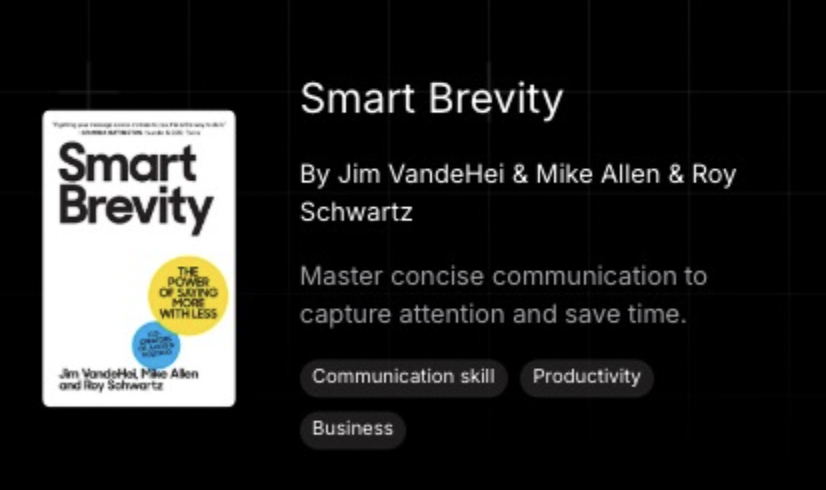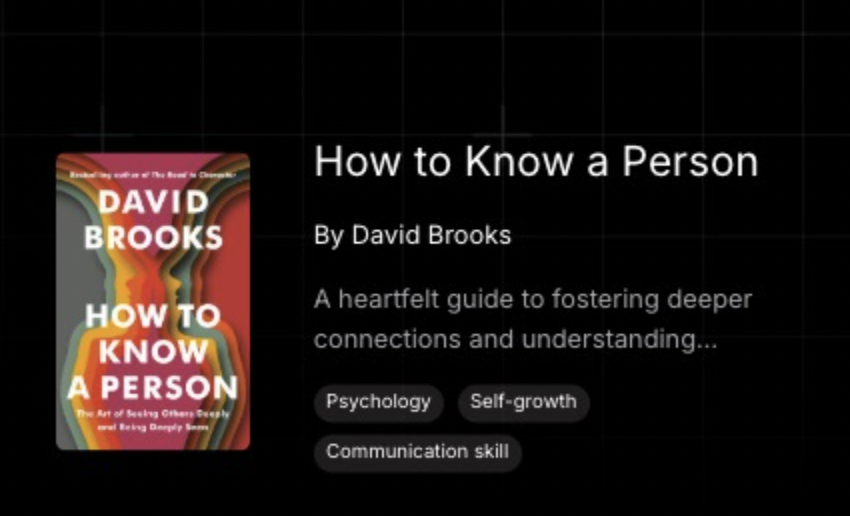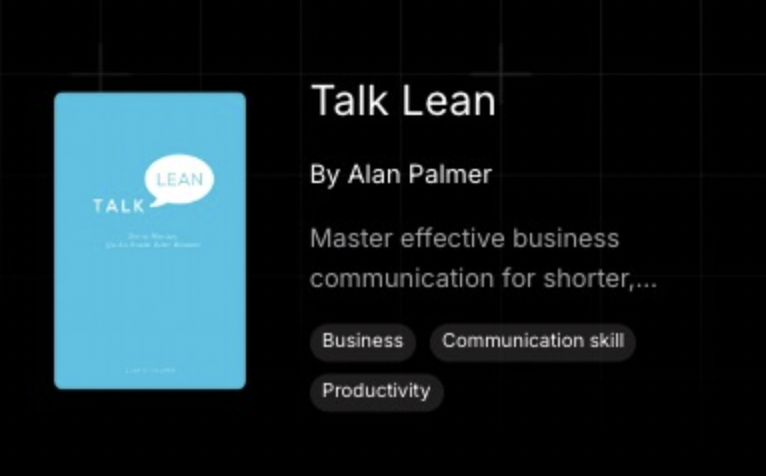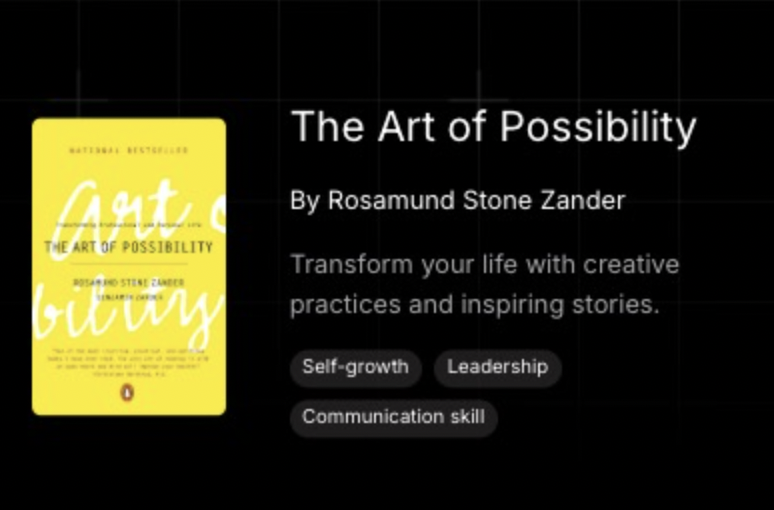7 Life-Changing Books to Boost Your Conversational Confidence
Discover 7 powerful books and resources to boost your conversational confidence in 2025.

Have you ever felt stuck in a conversation, unsure of what to say next? I’ve been there too. The good news is that books can be a game-changer. They don’t just inspire; they teach practical strategies to help you connect with others and express yourself clearly. For example, books like How to Win Friends and Influence People focus on building rapport, while Just Listen dives into the art of deep listening.
Take a look at this table of strategies from some incredible books:
Book TitleKey StrategiesPersuasion: The Art of Influencing PeopleFocuses on reasoning and honesty in persuasion, emphasizing the importance of word choice.Talk Like TEDAnalyzes effective public speaking techniques used by top speakers to captivate audiences.Body LanguageExplains the significance of understanding body language for effective communication.
These strategies aren’t just theory—they work. Whether it’s learning to read body language or mastering public speaking, these tools can help you boost confidence and transform how you interact with others. Ready to take that first step? Let’s dive in together.
Key Takeaways
- Books can help you talk better by giving useful tips.
- Stick to one main idea in talks to make it clear.
- Listen carefully and ask questions to connect with people more.
- See problems in relationships as chances to learn and grow.
- Try tools like BeFreed Summaries to quickly learn book ideas.
1. Boost Confidence with Smart Brevity by Jim VandeHei, Mike Allen, and Roy Schwartz

Why This Book Matters
Have you ever felt like your words get lost in translation? I know I have. That’s where Smart Brevity comes in. This book teaches you how to communicate clearly and effectively by saying more with fewer words. It’s not just about being concise—it’s about being impactful.
One story that stuck with me was about a middle school teacher who used these principles in emails to parents. By focusing on one key message, he avoided confusion and repetitive questions. His confidence grew because he knew his communication was hitting the mark. That’s the power of this book—it helps you prioritize clarity and importance in every interaction.
Key Takeaways
Here’s what makes Smart Brevity so effective:
- Focus on one key message to make it stick.
- Use clear, concise language to highlight what matters most.
- Structure your content to be scannable with bullets and bolding.
These strategies aren’t just for writing. They work in conversations too. Imagine how much easier it would be to explain your ideas if you could get straight to the point without losing your audience.
Real-Life Applications
I’ve found so many ways to apply these lessons. For example, when I’m preparing for a meeting, I now focus on the one thing I want everyone to remember. I also use shorter sentences and avoid jargon. It’s amazing how much more confident I feel when I know my message is clear.
Readers of Smart Brevity have shared similar experiences. One reviewer said it’s “brief but impactful,” while another called it “one of the most actionable books” they’ve read. Whether you’re writing an email or having a tough conversation, this book gives you the tools to boost confidence and communicate better.
2. Boost Confidence with How to Know a Person by David Brooks

Why This Book Matters
Have you ever felt like conversations stay on the surface, never really diving into what makes someone tick? I’ve been there, and it can feel frustrating. That’s why this book is such a gem. David Brooks takes a deep dive into the art of truly understanding others. It’s not just about asking questions—it’s about listening, observing, and connecting on a deeper level.
This book matters because it reminds us that every person has a story. Brooks shares insights on how to uncover those stories and build meaningful relationships. Whether you’re talking to a friend, a coworker, or even a stranger, this book helps you see them in a new light.
Key Takeaways
Here’s what stood out to me:
- Be curious, not judgmental. Approach conversations with genuine interest in the other person.
- Pay attention to non-verbal cues. Sometimes, what’s not said speaks louder than words.
- Ask open-ended questions. These invite people to share more about themselves.
- Practice patience. Understanding someone takes time and effort.
These lessons aren’t just theoretical. They’re practical tools you can use every day to connect with others.
Real-Life Applications
I started using these strategies in my own life, and the results have been amazing. For example, I recently had a conversation with a colleague I didn’t know well. Instead of sticking to small talk, I asked about their favorite project at work. That one question opened the door to a deeper discussion, and I learned so much about their passions and goals.
This book also helped me boost confidence in social settings. When I focus on understanding others, I feel less pressure to perform or impress. It’s a game-changer. If you’re ready to transform your conversations, this book is a must-read.
3. Boost Confidence with Talk Lean by Alan Palmer

Why This Book Matters
Have you ever struggled to say exactly what you mean without sounding rude or awkward? I’ve been there, and it’s not fun. That’s why Talk Lean is such a valuable resource. Alan Palmer focuses on helping readers communicate directly and effectively while maintaining respect and professionalism. It’s all about finding that balance between being clear and being considerate.
This book matters because it tackles a common problem—how to avoid misunderstandings and wasted time in conversations. Palmer introduces a concept called “The Straightforward Method,” which teaches you how to express yourself with clarity and purpose. Whether you’re in a business meeting or a casual chat, this approach can transform the way you communicate.
Key Takeaways
Here’s what I learned from Talk Lean:
- Be clear about your intentions. Start conversations by stating your purpose.
- Use simple, direct language. Avoid overcomplicating your message.
- Respect the other person’s time. Get to the point without unnecessary detours.
- Stay polite but firm. You can be honest without being harsh.
These lessons are practical and easy to apply. They’re not just for work settings—they work in personal relationships too.
Real-Life Applications
I’ve started using “The Straightforward Method” in my daily life, and it’s been a game-changer. For example, during a recent team meeting, I clearly outlined my goals for the discussion right at the start. It saved time and kept everyone focused. I also noticed that being direct made me feel more confident.
Even in personal conversations, this method works wonders. When I need to address a sensitive topic, I now approach it with clarity and kindness. It’s amazing how much smoother things go when you’re upfront yet respectful. If you’re looking to boost confidence in your communication, this book is a must-read.
4. Boost Confidence with The Relationship Curve by Michael J. Rosenfeld

Why This Book Matters
Have you ever wondered why some relationships thrive while others fizzle out? I know I have. That’s where The Relationship Curve comes in. Michael J. Rosenfeld dives into the science of relationships, showing how they grow and evolve over time. This book isn’t just about romantic connections—it’s about all kinds of relationships, from friendships to professional bonds.
What makes this book stand out is its focus on the “curve” of relationships. Rosenfeld explains how relationships often start with excitement, hit challenges, and then deepen with effort and understanding. It’s a refreshing take that helps you see relationships as dynamic and ever-changing. For me, it was a reminder that building strong connections takes time and patience.
Key Takeaways
Here’s what I learned from The Relationship Curve:
- Relationships are a journey. They grow through shared experiences and mutual effort.
- Conflict isn’t always bad. It can strengthen bonds when handled with care.
- Communication is key. Honest and open conversations build trust.
- Invest in quality time. Spending meaningful moments together deepens connections.
These insights helped me see relationships in a new light. They’re not just about avoiding problems—they’re about embracing growth and change.
Real-Life Applications
I’ve started applying these lessons in my own life, and the results have been amazing. For example, I used to avoid tough conversations with friends, fearing they’d create distance. Now, I approach them with honesty and a willingness to listen. It’s incredible how much closer we’ve become.
At work, I’ve also noticed a difference. By focusing on open communication and investing time in team relationships, I’ve built stronger connections with my colleagues. It’s boosted my confidence in both personal and professional settings. If you’re looking to boost confidence in your relationships, this book is a must-read.
5. Boost Confidence with Growing Up in Public by Devorah Heitner

Why This Book Matters
Have you ever wondered how growing up in the digital age shapes the way we communicate? I know I have. Growing Up in Public dives into this fascinating topic, exploring how technology impacts kids and teens as they navigate relationships and self-expression. While the book focuses on younger generations, it offers valuable lessons for anyone looking to understand modern communication challenges.
What struck me most was how Heitner highlights the pressure to present a “perfect” version of ourselves online. This constant need for validation can make conversations feel shallow or even intimidating. The book reminds us that authentic communication—both online and offline—requires vulnerability and empathy. It’s a powerful message for anyone who wants to boost confidence in their interactions.
Key Takeaways
Here’s what I learned from this insightful read:
- Digital footprints matter. Everything we post online shapes how others perceive us.
- Empathy is essential. Understanding someone’s online and offline experiences helps build stronger connections.
- Boundaries are key. Knowing when to unplug can improve focus and deepen relationships.
- Authenticity wins. Being real, even when it’s uncomfortable, fosters trust and meaningful conversations.
These lessons aren’t just for kids. They’re for anyone who wants to communicate more effectively in today’s digital world.
Real-Life Applications
After reading this book, I started paying closer attention to how I interact online. For example, I’ve made a habit of pausing before I post anything, asking myself if it reflects my true self. This small change has made me feel more confident about my digital presence.
I’ve also started practicing empathy in conversations, especially with younger family members. Instead of dismissing their online struggles, I ask questions and listen without judgment. It’s amazing how much closer we’ve become. If you’re looking to boost confidence in both digital and face-to-face interactions, this book is a must-read.
6. Boost Confidence with The Art of Possibility by Rosamund Stone Zander and Benjamin Zander

Why This Book Matters
Have you ever felt stuck in a rut, like your conversations or relationships are going nowhere? I’ve been there too. That’s why The Art of Possibility is such a breath of fresh air. This book isn’t just about communication—it’s about shifting your mindset to see opportunities where you once saw obstacles.
Rosamund and Benjamin Zander combine their expertise in psychology and music to show how possibility can transform the way we interact with others. They remind us that our mindset shapes our reality. When we approach conversations with curiosity and openness, we create space for deeper connections. This book matters because it teaches us to embrace possibility, not just in conversations but in every aspect of life.
Key Takeaways
Here’s what I found most inspiring:
- Reframe challenges as opportunities. Instead of focusing on what’s wrong, ask, “What’s possible here?”
- Practice “giving an A.” Treat others as if they’re already successful, and watch how it changes the dynamic.
- Lead with curiosity. Ask questions that spark creativity and connection.
- Focus on contribution. Shift the spotlight from yourself to how you can add value to others.
These ideas aren’t just theoretical—they’re practical tools you can use every day.
Real-Life Applications
I’ve started using these lessons in my own life, and the results have been amazing. For example, during a recent disagreement with a friend, I paused and asked, “What’s the best outcome we can create together?” That simple question shifted the tone of the conversation and helped us find common ground.
At work, I’ve embraced the idea of “giving an A.” Instead of critiquing my team’s efforts, I focus on their strengths and potential. It’s incredible how much more confident and motivated they’ve become.
This book has helped me boost confidence in my interactions by teaching me to focus on possibilities instead of limitations. If you’re ready to transform your mindset and your conversations, this book is a must-read.
7. Boost Confidence with BeFreed Summaries
Why This Resource Matters
Have you ever felt overwhelmed by the sheer number of books you want to read but don’t have the time? I’ve been there too. That’s why BeFreed Summaries is such a game-changer. This platform condenses the key ideas from popular books into bite-sized summaries. It’s perfect for anyone who wants to learn quickly and apply those lessons right away.
What makes this resource stand out is its focus on actionable insights. Instead of just summarizing the content, BeFreed highlights practical strategies you can use in real life. Whether you’re preparing for a big presentation or trying to improve your small talk, these summaries give you the tools to succeed.
Key Takeaways
Here’s what I love about BeFreed Summaries:
- Time-saving: You can absorb the main ideas of a book in minutes.
- Actionable tips: Each summary focuses on strategies you can apply immediately.
- Wide variety: From communication to leadership, there’s something for everyone.
- Accessible format: The summaries are easy to read and understand, even on a busy schedule.
These features make it easier to boost confidence in your conversations without feeling overwhelmed.
Real-Life Applications
I’ve started using BeFreed Summaries to prepare for meetings and social events. For example, before a recent networking event, I read a summary on building rapport. It gave me quick tips I could use right away, like asking open-ended questions and mirroring body language. The results were amazing—I felt more confident and connected with people more easily.
Even in casual conversations, these summaries have been a lifesaver. They’ve helped me stay informed and share interesting insights, which always sparks engaging discussions. If you’re short on time but eager to improve your communication skills, BeFreed Summaries is a fantastic resource.
Improving conversational skills doesn’t happen overnight, but every small step counts. These books and resources offer practical tools to help you boost confidence and connect with others more effectively. Start with just one book or summary that resonates with you. Apply its lessons in your daily interactions, and watch how your confidence grows.
Remember, communication is a skill you can master with practice. Embrace the journey, celebrate your progress, and enjoy the meaningful connections you’ll create along the way. You’ve got this!







